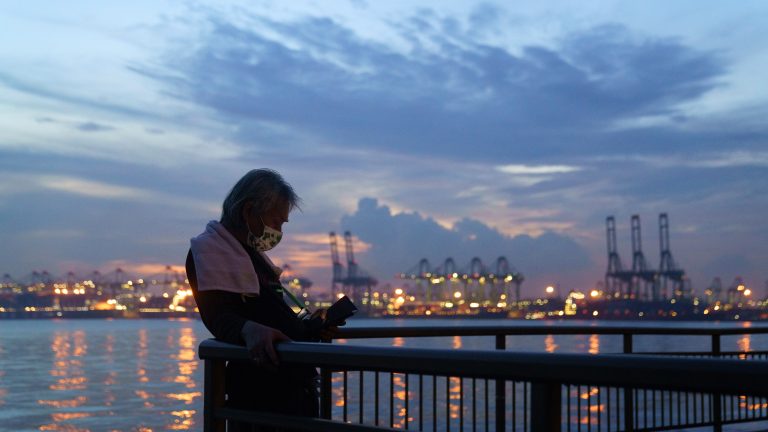Co-published with Foreign Policy
WHAT YOU NEED TO KNOW
But decades later, those companies continue to use the same aggressive marketing tactics in countries with less resources to enforce regulations.
Globally, experts warn that these companies have long employed predatory marketing in order to maximize the purchase of formula at the expense of breastfeeding.

The same week in February that Abbott, one of the top producers of baby formula in the United States, began a series of recalls that triggered a national shortage, the World Health Organization (WHO) released an important but little-noticed report. The researchers cataloged another problem with baby formula: There’s an overreliance on it in much of the world, and that’s the result of aggressive and misleading marketing by the companies producing it.
“Formula milk marketing knows no limits. It misuses and distorts information to influence decisions and practices,” the authors wrote. The report researched formula marketing practices in eight countries around the world but was largely overshadowed by news in the United States.
The current shortage of formula in the United States underscores the need for substitute milk and there are circumstances when formula is indispensable, especially for working parents, parents with premature babies, or parents who are struggling to lactate. The need is so essential that the Biden administration announced earlier this month that it would import 44,000 pounds of Nestlé infant formula from Switzerland to distribute throughout the United States.
But the global health consensus is that breastmilk, whenever possible, is always better for infant health than commercial products. The benefits of breastfeeding have been well-documented: It improves immune systems to better protect babies against infections, and it reduces mothers’ risks of diabetes and even cancer. In wealthy countries, robust public health campaigns together with tighter scrutiny on corporate advertising mean mothers face better chances at making informed decisions about when to use milk formula.
Formula milk companies in Vietnam, meanwhile, deploy some of the most aggressive marketing strategies in the world, according to the WHO. Women are bombarded with television commercials and social media posts, often distorting science to legitimize claims and sell their products. Representatives of these companies, known as “promotional girls,” even stroll the halls of hospitals to befriend new and unsuspecting mothers.
The marketing is effective. About 76 percent of babies in Vietnam are fed formula, either partially or completely. The United Nations has set a target to bring that number down globally to 50 percent by 2025 — a goal the world will likely miss.
“It’s in rapidly advancing economies like Vietnam where they put a lot of energy,” says Dr. Laurence Grummer-Strawn, a nutrition expert at the WHO. “They know that there’s going to be a growth in the market there. People’s incomes are rising, women are getting more and more active in the workforce, and so they do a lot of marketing.”
About one-third of all new mothers in Vietnam say they’ve been given samples, higher than any other country surveyed by the WHO except China. But the problem is global. The WHO research team also found such aggressive marketing tactics in Bangladesh, Mexico, Morocco, Nigeria, South Africa, and elsewhere. In one of the most outrageous cases, the WHO documented healthcare workers in Mexico whisking infants away from lactating mothers and unnecessarily introducing day-old newborns to formula.
These strategies persist despite the International Code of Marketing and Breast-milk Substitutes, a framework on best practices similar to the global tobacco agreement. The two products are in fact the only items for which worldwide recommendations on marketing exist. The non-binding nature of the Code, however, has meant that companies continue to put profits over people, particularly in countries where public health infrastructure and enforcement mechanisms are weaker.
The WHO adopted the framework in 1981 after the London-based nonprofit War on Want published a seminal report entitled, “The Baby Killer.” The report investigated the aggressive and inaccurate marketing tactics of multinational baby milk formula companies at the time. Researchers accused Nestlé and Abbott — still major players in the market today — of peddling formula to mothers who could not afford them and would have been better off breastfeeding. From Jamaica to Jordan, they documented how early adoption of milk formula led to higher rates of infection and, in the most extreme cases, malnutrition, as low-income mothers sought to extend costly formula by diluting the solution. The report shocked the public and moved the world to action.
Today, though, the WHO says that globally only 44 percent of babies under six months are exclusively breastfed. Meanwhile, formula has ballooned to a $55 billion industry. Those profits in part reflect the growing number of women worldwide who are joining the workforce and opting for formula because they have fewer opportunities to breastfeed their babies. But it is also the result of pushy marketing practices in countries where local health infrastructure is weak and lactation counseling services are unable to keep up. From China to Nigeria, new mothers contend with a panoply of information touting formula milk over breastfeeding.
The internet provides these companies with a powerful and easy tool they did not have decades ago. Digital marketing is cheap, and through social media influencers, Facebook parenting groups, and Google search ads, breastmilk substitute companies push their products — and their questionable health claims — through means that are not easily recognizable as advertising.
To Huong, 35, who lives in Vietnam, saw firsthand the marketing tactics of formula milk companies when she gave birth via C-section to her first child seven years ago. She believed — from friends, family members, and the mess of information she found clicking around the internet — that women who had C-sections could not breastfeed.
“I wasn’t confident,” she said. “And then after my delivery, I did not have breastmilk readily. So I went with formula.” She didn’t know at the time that with some help from a counselor, it was likely she could have breastfed her child.
Selecting which brand of formula to buy proved as stressful as her decision to use it at all. She said she was “overwhelmed by different ads,” which promised everything from infant digestive health to reduced crying.
Alive & Thrive, a global maternal and infant health organization, worked with a technical team last year to examine the Vietnamese market. Scraping more than 16,000 online posts, from social media content to e-commerce websites, they found more than 4,000 violations of the Code, with Japan’s GuunUp MBP the leading culprit in the country — 80 percent of its posts failed to meet Code standards. Other multinationals, from US-based Mead Johnson to Switzerland’s Nestlé, were also caught employing questionable marketing tactics.
In one example, Alive & Thrive researchers found Mead Johnson providing discounts for its Enfagrow brand of infant formula — a violation of the Code to market products for children under 24 months old. In the advertisement, the company used a photo of their product meant for toddlers as a means of staying compliant. Alive & Thrive also found that Nestlé, through its Facebook page in Vietnam, sought to contact parents directly — another Code violation.
Manufacturers have even capitalized on parental fears around Covid-19, pivoting their marketing to focus on vague claims their products improve immunity. According to the International Journal of Environmental Research and Public Health, one Vietnamese brand used a photo of WHO Director-General Tedros Adhanom Ghebreyesus on a Facebook post about the pandemic, suggesting by proximity that its formula might combat the virus.
In response to requests for comment, Nestlé Vietnam did not response to specific allegations but issued a statement saying the company responsibly markets breastmilk substitutes and that it has “a strict policy and robust compliance and governance system in place to hold our actions to account.” The other companies mentioned in this story did not respond to requests for comment.
Vietnam passed legislation in accordance with the Code a few years ago, meaning the government can take action against those who break advertising rules. But Vu Hoang Duong, a regional technical specialist at Alive & Thrive, said there “are too few to scan all the violations on digital platforms.” The Ministry of Health has just three inspectors in charge of Code enforcement. The ministry did not respond to requests for comment.
As a result, the work of countering pseudo-science and the confusing barrage of advertising often falls on mothers committed to promoting the benefits of breastfeeding over milk substitutes. To Huong, who regrets feeding her child formula, has a message for women in Vietnam: “Thoroughly research the origin and ingredients in formula milk before giving it to your baby. And if you’re having trouble, seek help from a breastmilk counselor!”
Vo Kieu Bao Uyen contributed reporting.






